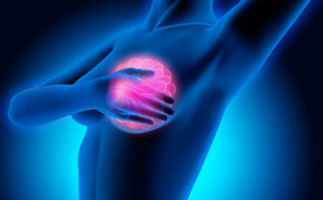
A minimally invasive technique that uses ice to freeze and destroy small, cancerous tumours has now been proven effective for breast cancer patients with large tumours, providing a new treatment path for those who are not candidates for surgery, according to new research to be presented at the Society of Interventional Radiology Annual Scientific Meeting in Salt Lake City.
“For patients who have larger tumours but can’t undergo surgery, this approach could be more effective than the current standard of care for patients who are not surgical candidates,” said Yolanda Bryce, M.D., an interventional radiologist at Memorial Sloan Kettering Cancer Center.
“When treated with only radiation and hormonal therapy, tumours will eventually return. So, the fact that we saw only a 10% recurrence rate in our study is incredibly promising.”
Cryoablation is a minimally invasive treatment that uses imaging guidance such as ultrasound or computed tomography (CT) scan to locate tumours.
An interventional radiologist will then insert small, needle-like probes into the breast to create an ice ball that surrounds the tumour, killing the cancer cells.
When combined with hormonal therapy and radiation, patients can have nearly 100% of their tumours destroyed.
If the tumours do grow, patients can be treated with cryoablation multiple times to control growth.
The treatment has been successfully used to treat tumours smaller than 1.5 cm, but its effectiveness on larger tumours was not extensively demonstrated until now.
This retrospective study assessed outcomes for 60 patients who underwent cryoablation because they were not candidates for surgery or refused surgery after consultation with a breast surgeon due to age, cardiac issues, hypertension, or currently undergoing chemotherapy for another cancer.
Their tumour sizes ranged from 0.3 – 9 cm with an average size of 2.5cm.
Patients with tumours larger than 1.4 cm were treated with multiple probes (one probe placement for each centimetre of disease).
In a follow-up after 16 months, the recurrence rate was just 10%.
“Surgery is still the best option for tumour removal, but there are thousands of women who, for various reasons, cannot have surgery,” said Bryce.
“We are optimistic that this can give more women hope on their treatment journeys.”
The procedures were performed with local anaesthesia or minimal sedation, depending on the eligibility and preference of the patient.
The freeze-thaw cycle started with 5-10 minutes of freezing, followed by 5-8 minutes of passive thaw, and then 5-10 minutes freezing at 100% intensity. Patients were able to go home on the same day, following the treatment.
The researchers will continue to follow the patient cohort to collect data on long-term effectiveness and to better understand the impact that adjuvant (e.g. hormone therapy and radiation) therapies combined with cryoablation can have on this patient population.
Source: The Reis Group